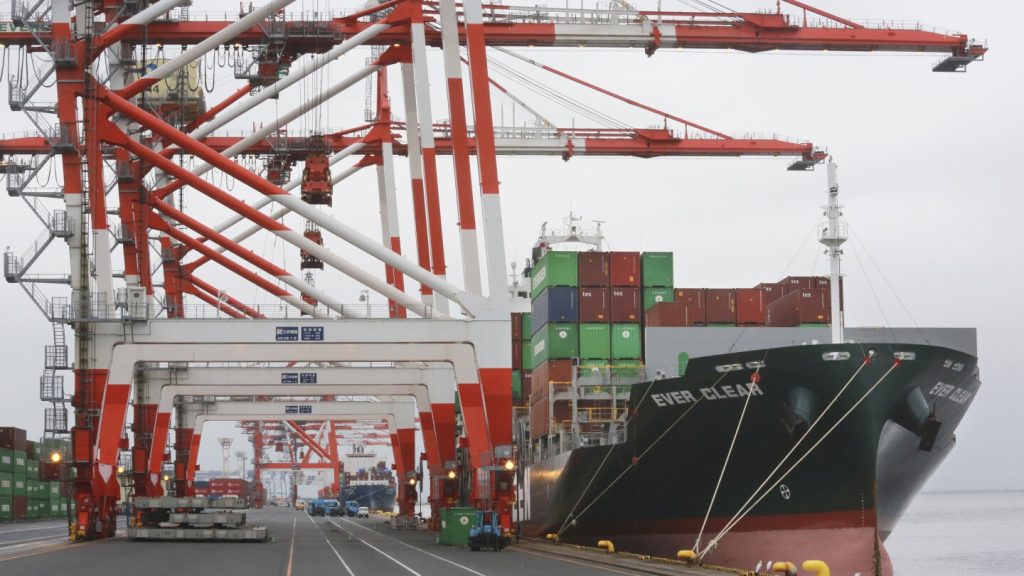Japan recorded a trade deficit of 294.3 billion yen ($2 billion) in September, with exports falling to key destinations like China. The overall trade deficit for the first half of the fiscal year was 3.1 trillion yen ($21 billion). This decline in exports in September marked the first such drop in 10 months, while imports grew by 2.1% due to a weak yen, which inflated their value. The unexpected drop in exports could be attributed to weaker demand in major economies or temporary disruptions like a recent typhoon, highlighting concerns about slowing global demand for export-dependent Japan.
The U.S. dollar has been trading at around 149 yen levels recently, up from about 120 yen two years ago. Inflation and rising energy prices have also increased import costs for Japan. Despite these challenges, exports grew by 6.6% from April through September to 53.55 trillion yen ($358 billion) due to strong demand for computer chips. Imports also saw a 7% increase during this period to 56.66 trillion yen ($379 billion), with Japanese businesses and shoppers purchasing more U.S. products. Japan recorded a trade surplus of nearly 4.3 trillion yen ($29 billion) with the United States but a deficit of 3 trillion yen ($20 billion) with China in the first half of fiscal 2024.
Despite the overall trade deficit and challenges in key markets like China, Japan’s exports to other Asian countries saw an increase, suggesting that demand in those regions remained strong. The weak yen and ongoing global economic uncertainties, such as inflation and energy prices, continue to pose risks to Japan’s trade balance. The fluctuations in the exchange rate between the U.S. dollar and the Japanese yen have also impacted import costs for Japan, contributing to the trade deficit. The long-term concern for Japan remains the impact of slowing global demand on its export-dependent economy and the need to diversify trade partners to mitigate risks.
The trade deficit in September and the overall deficit for the first half of the fiscal year highlight the challenges faced by Japan’s export-oriented economy. While exports to key markets like China declined, the growth in exports to other Asian countries and increased imports from the U.S. contributed to the trade imbalance. The fluctuations in the exchange rate, inflation, and rising energy prices have further compounded the challenges for Japan’s trade balance. As the global economic environment remains uncertain, Japan will need to address these issues and find ways to boost export growth while managing import costs to improve its trade position.
The trade data also point to the importance of diversifying trade partners for Japan to reduce its dependence on a few key markets like the U.S. and China. Strengthening relationships with other Asian countries and exploring new export opportunities in emerging markets could help mitigate the impact of fluctuations in demand from major economies. Addressing structural issues within the economy, such as increasing competitiveness and innovation in key industries, will also be essential for Japan to sustain long-term export growth and improve its trade balance. Despite the current challenges, Japan has demonstrated resilience in adapting to changing global economic conditions and will need to continue navigating uncertainties to ensure its economic stability in the future.
In conclusion, Japan’s trade deficit in September and for the first half of the fiscal year highlights the ongoing challenges facing its export-dependent economy. The decline in exports to key markets and the impact of external factors like exchange rate fluctuations and inflation have contributed to the trade imbalance. To address these challenges, Japan will need to diversify its trade partners, strengthen export competitiveness, and adapt to changing global economic conditions. By implementing strategic measures to boost export growth and manage import costs, Japan can improve its trade position and ensure long-term economic stability.


